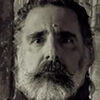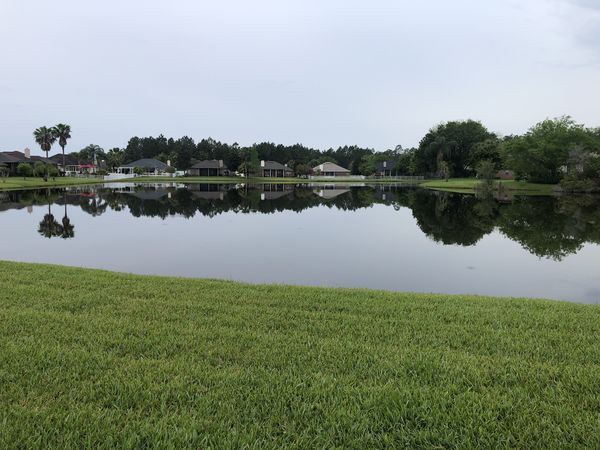Incident Light Metering - It makes more sense than you might think
Apr 5, 2020 08:13:06 #
selmslie wrote:
Don't knock cell phone apps. The are free or inexpensive and usually as accurate as you need. And they are usually in your pocked or purse. A good incident meter is not cheap.
I can't see why the cell phone app can be accurate. To be accurate the meter must have the correct geometry for the sensor either a flat or dome diffuser. Each meter must also individually calibrated.
Apr 5, 2020 08:13:33 #
Peterfiore wrote:
You can also take a meter reading off the palm of your hand. You need to open 1 stop...average palm is one stop brighter than 18% gray card. Just make sure you hand is in the same light as your subject. This is the same result as using an incident meter.
I learned this method when I was a kid from Uncle...
I learned this method when I was a kid from Uncle...
You're speaking of reflective light whereas incident light is the light that falls on an object. My understanding pales in comparison to Scotty's on this subject but I can assure you an incident light meter in studio work for precise measurement is indispensable especially when I'm working with light ratios.
Apr 5, 2020 08:18:52 #
Thanks for sharing. I think a handheld light meter is a valuable tool to know how to use, especially in studio lighting.
selmslie wrote:
At the risk of bringing out more comments from pho... (show quote)
Apr 5, 2020 08:25:15 #
billnikon
Loc: Pennsylvania/Ohio/Florida/Maui/Oregon/Vermont
selmslie wrote:
At the risk of bringing out more comments from pho... (show quote)
Incident Light Metering is a very good method of reading the proper amount of light in a difficult shooting environment.
Take the following picture for example. Early morning light, very dark back ground, incident light meter reading for a Great Blue Heron bringing in nesting material, had I used the camera, it would have blown it out. With the Incident light meter reading, I got the correct exposure and nailed it. Yes, when possible, I always use an incident light meter reading. I have it attached to a lanyard around my neck.
However, sometimes I use the camera when lighting is straight forward.
Good luck and keep on shooting until the end.

Apr 5, 2020 08:42:20 #
Haydon wrote:
You're speaking of reflective light whereas incident light is the light that falls on an object. My understanding pales in comparison to Scotty's on this subject but I can assure you an incident light meter in studio work for precise measurement is indispensable especially when I'm working with light ratios.
Your right, What I'm talking about is a reflected light meter reading, which if done correctly will give the same result as an incident meter.
Just try it...If you have an average palm, in terms it's value, it will work out to be the same reading an incident light reading....
For studio work absolutely....The incident meter is king.
Apr 5, 2020 08:44:03 #
I have a Minolta (from the late 70's) that I used while working my way through photography school. Using it on the beach in Oregon, I had the incident bulb on and pointed straight up to get my reading. The result was two awards from the PPA of Washington State. Best in Show and of all things an autographed Judges Choice Award.
I still consider that light meter an essential part of my gear. Yes, even with my digital camera.
I still consider that light meter an essential part of my gear. Yes, even with my digital camera.
Apr 5, 2020 08:44:37 #
Camera light meters today are a marvel. And post processing on a computer can save the day. That said, years ago I discovered the Wallace Expodisc and have been using it since when shooting landscapes in the snow. It turns my DSLR into an incident light meter while helping set "proper" exposure on the camera. In winter, "Don't leave home without it."
Apr 5, 2020 09:09:43 #
Peterfiore wrote:
Just try it...If you have an average palm, in terms it's value, it will work out to be the same reading an incident light reading....
For studio work absolutely....The incident meter is king.
For studio work absolutely....The incident meter is king.
Glad to see that was corrected with reflected. I use a Sekonic 758D that does both. The trick is to know what to use when :) I've tried the palm. Much of my use is in a studio. I don't do much outdoor work anymore. HSS is another issue where a meter doesn't work well even with the new 858D.
Apr 5, 2020 09:16:39 #
What effect does the proximity of a camera meter reading to the subject have, i.e., would the reflective & incident readings of the camera & light meter be basically the same?
Apr 5, 2020 09:16:50 #
BebuLamar wrote:
I can't see why the cell phone app can be accurate. To be accurate the meter must have the correct geometry for the sensor either a flat or dome diffuser. Each meter must also individually calibrated.
Of course it's accurate. Otherwise you could not use a cell phone to capture images at different incident light levels.
The cell phone's LV reading is slightly different than the one I got from my Luna-PRO digital F.
The difference is that the Luna-PRO has a dome that covers nearly 180° in all directions. The iPhone's sensors only cover a 28mm equivalent field of view.
A new incident meter will cost between $125 and $2000.
The iPhone app cost me about $4.
Apr 5, 2020 09:23:24 #
I use a Sekonic L-508. I find the best use for the incident light function of this meter is shooting dark subjects that will "absorb" light and not reflect it back to my camera meter accurately. This is most obvious when shooting portraits of dark skinned subjects. Placing the incident meter on the subject and pointing it back to my camera almost always gives me accurate exposures. I know I can raise shadows when post processing, but I prefer to start with a properly exposed subject.
Apr 5, 2020 09:26:14 #
raymondh wrote:
What effect does the proximity of a camera meter reading to the subject have, i.e., would the reflective & incident readings of the camera & light meter be basically the same?
A reflected reading for a dark object or a scene where most of the image is dark (see billnkon's example would recommend a different exposure than for a scene with a large light area. Imagine what would have happened if his background had been a lot of white clouds.
But an incident reading would have recommended the same exposure for both situations.
Apr 5, 2020 09:29:52 #
bweber wrote:
.... This is most obvious when shooting portraits of dark skinned subjects. Placing the incident meter on the subject and pointing it back to my camera almost always gives me accurate exposures. I know I can raise shadows when post processing, but I prefer to start with a properly exposed subject.
It also makes a dramatic difference when shooting black or white birds or pets against light or dark backgrounds. It eliminates lots of potential complications and retakes.
Apr 5, 2020 09:30:09 #
can someone explain EV ? I have a light meter and a phone app but don't understand EV. in this thread EV 15 and 17 were mentioned, so what would I do with those numbers ?
Apr 5, 2020 09:31:54 #
Flash Falasca wrote:
can someone explain EV ? I have a light meter and a phone app but don't understand EV. in this thread EV 15 and 17 were mentioned, so what would I do with those numbers ?
Take a look at Image Brightness – What Affects It.
If you want to reply, then register here. Registration is free and your account is created instantly, so you can post right away.












